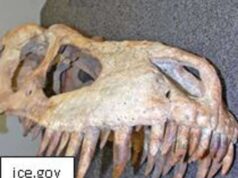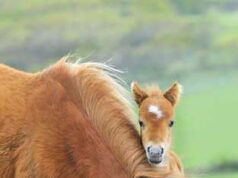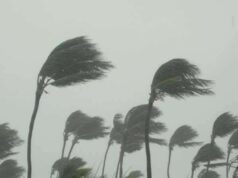
Animals Poisoned by World War II Toxins
During World War II, a significant amount of chemical weapons were used by various countries. Many of these chemicals were hazardous to humans and animals alike. Decades after the war’s end, some of these toxins continue to linger and affect local wildlife. In this article, we will explore some of the animals that have been poisoned by World War II toxins and the impact it has had on their populations.
The Legacy of Chemical Warfare
Several regions, particularly in Europe, Asia, and Africa, still bear the scars of World War II chemicals. Chemicals such as mustard gas and phosgene were deployed in various theaters of war and resulted in countless casualties, including an estimated 1 million civilians.
However, even after the war, residual chemicals from unexploded ordnances and abandoned dumps continue to pollute the environment, impacting plant and animal life. Additionally, the post-war proliferation and disposal of chemical weapons have also resulted in environmental degradation and health hazards.
Animals Poisoned by Chemical Toxins
The long-term impact of chemical warfare on animal populations is varied and complex, with different toxins impacting different species differently. Here are a few examples of animals poisoned by World War II toxins:
1. Bats: Some species of bats have been found to have elevated levels of lead in their tissues from consuming insects contaminated with lead-based chemicals.
2. Fish: Fish in several bodies of water around the world have been contaminated with heavy metals and other chemicals from unexploded chemical weapons and munitions.
3. Birds: Several bird species have been impacted by chemical toxins, particularly DDT, which was widely used as an insecticide in agriculture after the war. DDT is known to adversely affect the reproductive success of a number of bird species and nearly caused the extinction of the bald eagle in the United States.
4. Animals in Soil: Numerous animals such as snails, earthworms, and insects can be impacted by toxins present in soil. These toxins make their way into the food chain and eventually impact larger animals.
Conclusion
The legacy of World War II chemical warfare continues to impact local wildlife decades after the war’s end. Hazardous chemicals from unexploded ordnances and chemical weapons storage sites continue to pollute environments, causing health hazards for both animals and humans alike. Raising awareness of this issue is important not only for the preservation of local wildlife but also for public health and safety. Efforts must continue to clean up and dispose of these toxic sites appropriately to reduce the long-term impact of chemical warfare on the environment.
The fisher, a threatened mammal species related to weasels, has lived in the Sierra National Forest for far longer than there has been human habitation in North America. Recent research, however, shows that a very human vice may be threatening the fisher population in Northern California.
In 2009, researchers report, a male fisher was necropsied after being found dead in the national forest. Toxological screening showed that the cause of death for the fisher was acute poisoning from a commercial rodenticide.
When scientists realized that the fisher had been poisoned, they started looking back at other fishers that had been recovered in the park in previous years. Rodenticide was present in 85 percent of the total fishers.
However, the scientists were initially unsure of what caused the rodenticide to be present in the first place. Typically, the only places that rodenticides are used are agricultural and urban environments. Because the Sierra National Forest is generally considered to be undeveloped land, risks to fishers from rodenticides were thought to be low.
According to scientists writing in the journal Conservation Letters, the culprit was illegal marijuana farming. While California has broadened its medical marijuana laws to allow some dispensary activity, federal raids on marijuana dispensaries and farms have resulted in illegal cultivation continuing, sometimes on federal lands like the Sierra National Park.
In order to keep rats and other animals from eating the marijuana crop, growers use large quantities of anticoagulant rodent poisons. Many of the toxins developed to create these rodenticides were originally designed as nerve poisons during World War II. Today, however, these toxins find their way into the soil and water around the cultivation sites, poisoning other animals. While the fisher is a carnivore, its prey is contaminated with the poisons.
When the fisher eats prey that contains the anticoagulant toxins, scientists say they will not necessarily die right away. Often, they will be weakened or made ill by small amounts of the poison, leaving them more vulnerable to their natural predators. Most of the animals studied that tested positive for toxins had been killed by predators, rather than dying directly of the toxin’s effects.
U.S. Forest Service wildlife ecologists said that illicit growing operations may be a factor in animal deaths that is often overlooked, because previously weakened animals are likely to be considered dead from predation if they display wounds from predators. The study shows that it may also be necessary to do toxicology screenings on these animals to make sure that they were not harmed by the effects of nearby poisons.




















